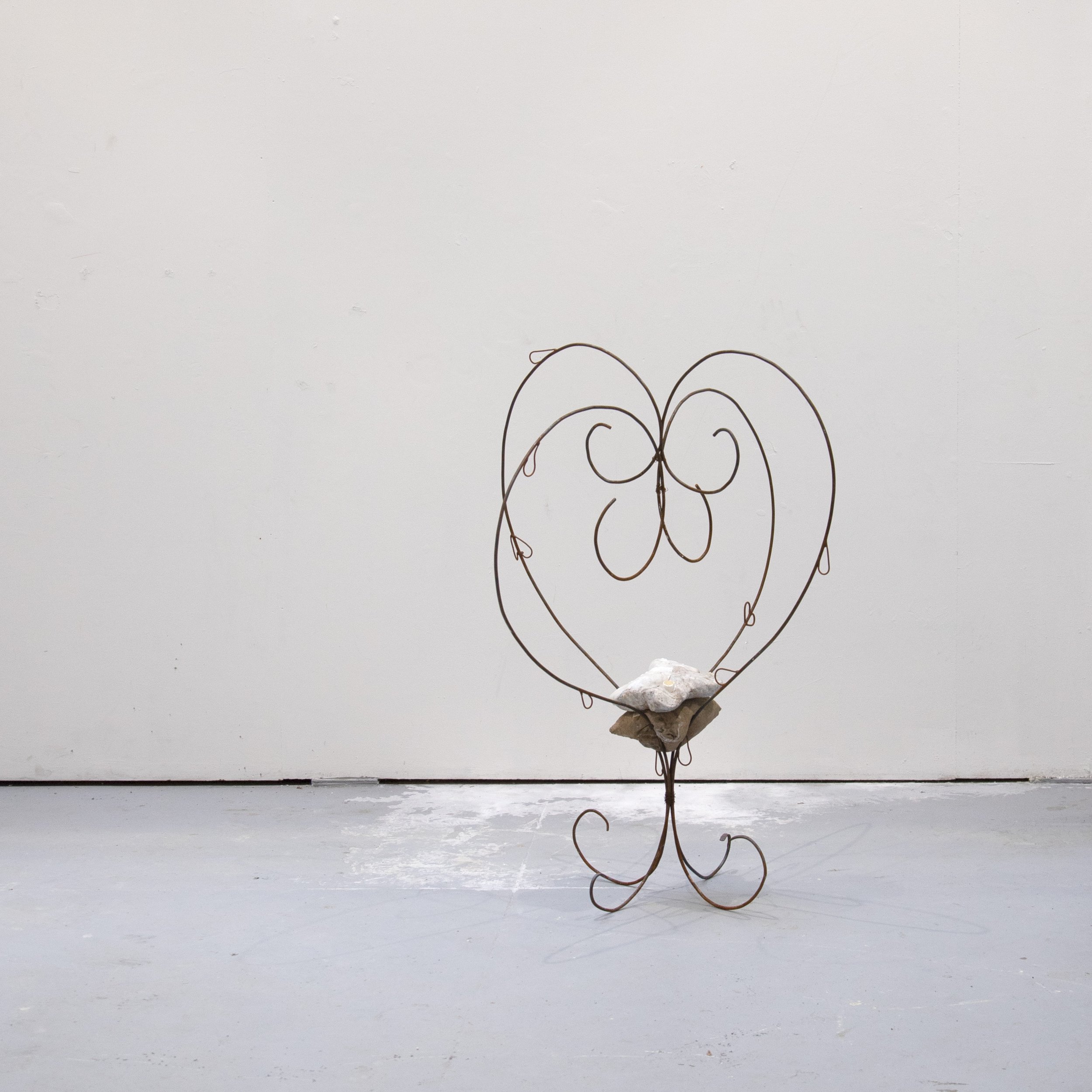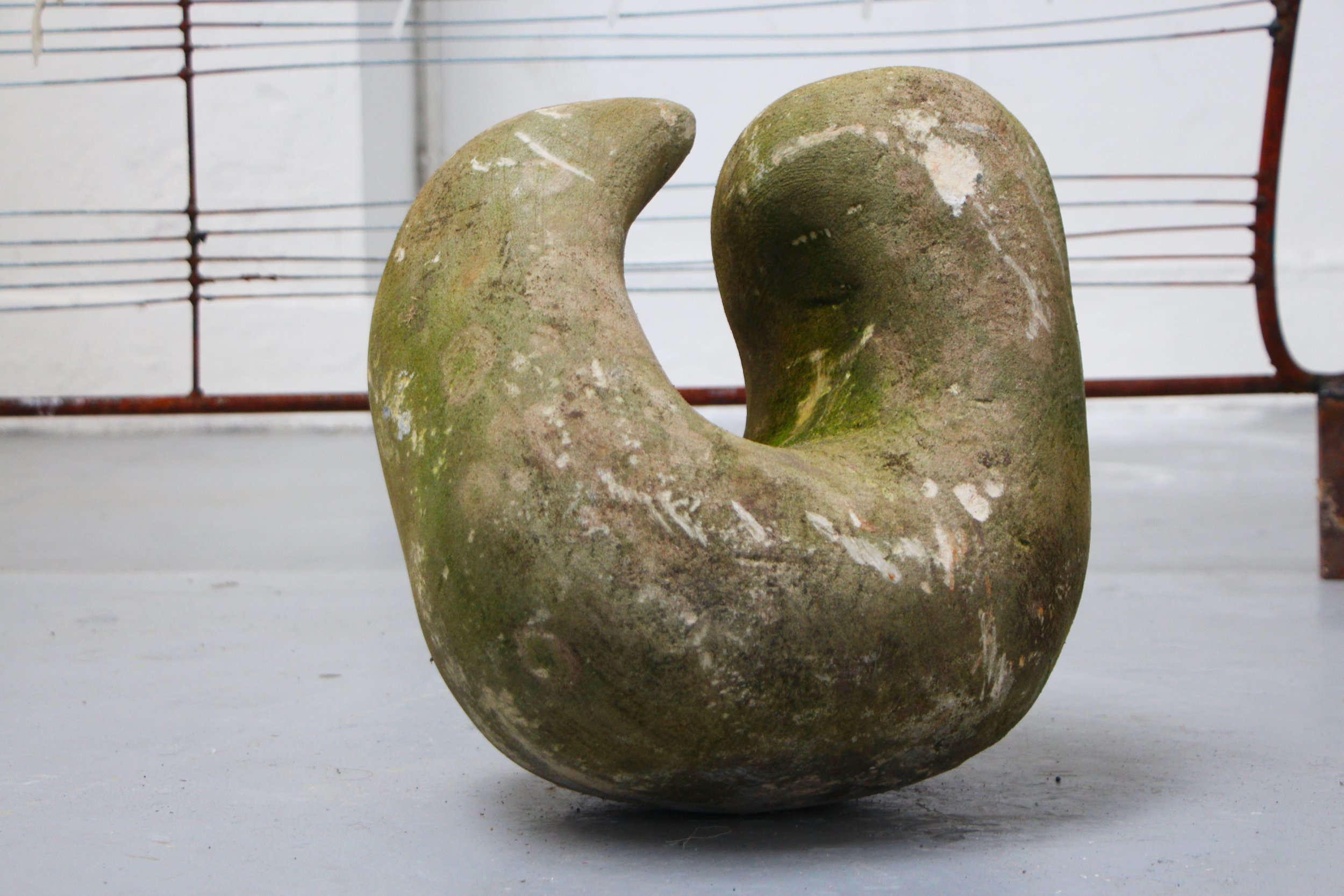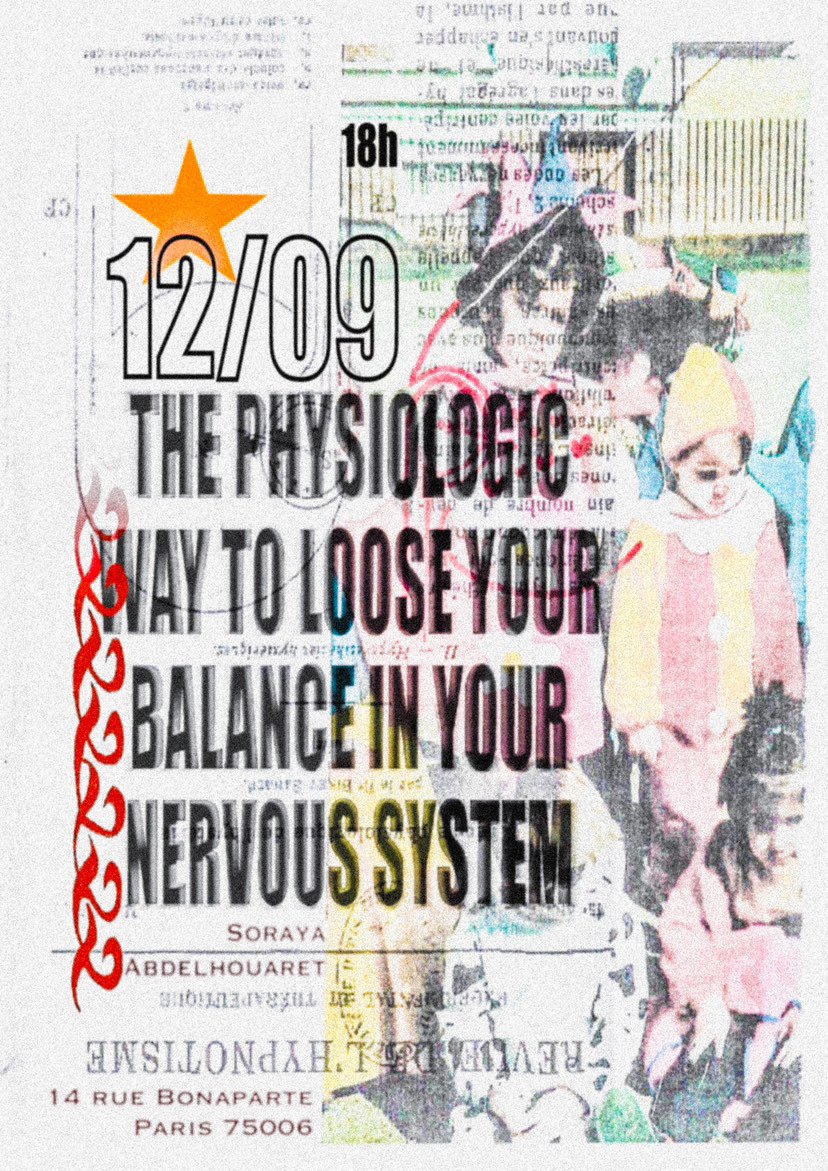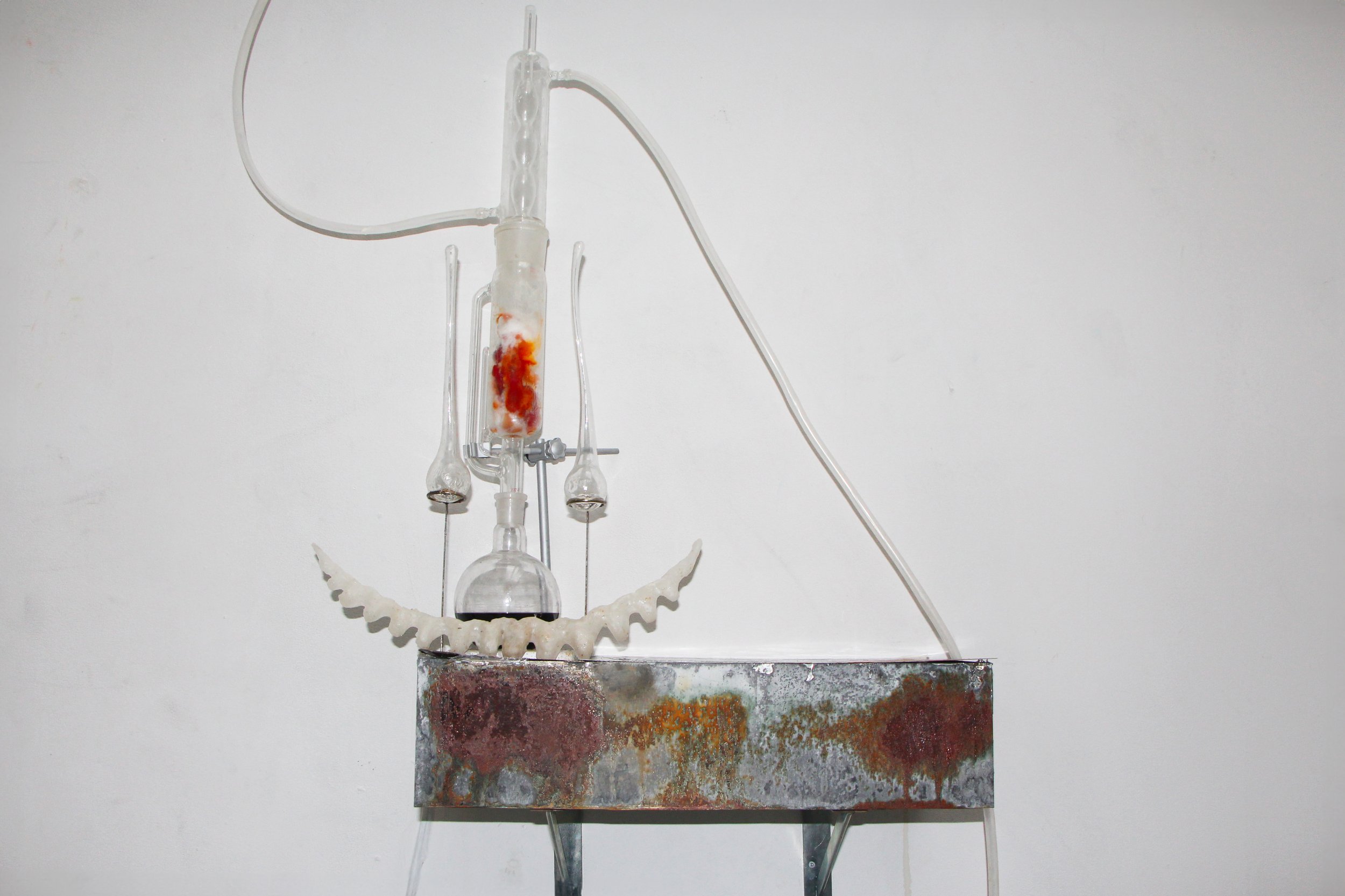







THE INTERVIEW
Soraya Abdelhouaret
1. Could you tell us a bit about your background and what led you to start your artistic practice?
I have always wanted to work with mineral materials and different alloys. I grew up between the misty beaches of the North and the slag heaps. As a child, I collected stones.
Later, I studied at the Beaux-Arts du Nord before joining the Beaux-Arts de Paris, where I recently graduated. I also recently trained in metalwork and sheet metal fabrication.
2. What themes do you explore in your work?
My work explores the connections between the body, memory, and materiality. I experiment with processes of material alteration and transformation, echoing physiological and emotional mechanisms. A kind of proto-chemistry blends with my personal narratives. This also informs my research, particularly through the study of transitional states, whether chemical or corporeal.
3. How has your work evolved over the years, and what has influenced these changes?
Over time, my practice has expanded to include new materials and processes. I started with printmaking, then moved on to stone carving, and later, blacksmithing. My interest in scientific experiments and material alteration became more defined, leading me to create more immersive installations.
Due to health issues, I would say my work has taken a stronger focus on the body and its functions.
4. Where do you find inspiration for your work?
The materials themselves are a major source of inspiration: their technical properties, their memory, their transformations, and their reactions to different elements influence the direction of my work. I combine these with personal experiences that are more tangible.
5. Can you explain your creative process and how you bring an idea to life?
My process often begins with personal research into micro-architecture and material experimentation. I use different chemical processes, which I combine with traditional techniques and sometimes industrial materials (polymers, composites, etc.), allowing room for accidents and the passage of time. Each piece is built in layers, balancing control and natural alteration.
6. What is the project you are most proud of to date?
My diploma exhibition, The Physiologic Way to Lose Your Balance in Your Nervous System, was an important project in my journey. I developed a scenography where each element evoked a vital organ, exploring the materiality of the body and its physiological resonance with matter. I am proud of this project because it reflects the different aspects that shape my work—whether in musical composition with Des crocodiles couverts de gemmes or in low-cost proto-scientific experiments like Le régulateur de larmes or Raison puis saison.
7. Do you plan to stay in Paris long-term, or are there other cities that inspire you and where you would like to work?
For now, I am quite settled in Paris and its surroundings. Since I have my studio here, I don’t see myself leaving just yet, but maybe in a few years. If I were to leave Paris, it would be for a place where the raw materials available inspire me—which is quite a broad idea at the moment!
8. What would you like to accomplish in the coming years?
In the coming years, I want to explore new materials in continuity with my practice. Glasswork interests me, and I plan to try cane glassblowing.
I also want to continue my experiments in metal casting and music.
9. If there is one thing you hope people take away from your work, what would it be?
I would like people to remember the forms and their limits. That it sparks curiosity about the transformations that sometimes escape our control.

